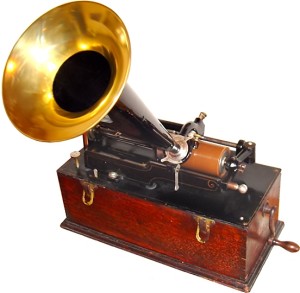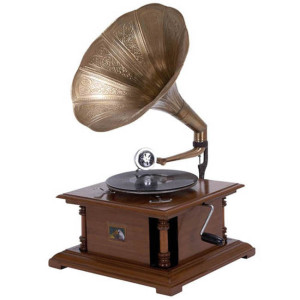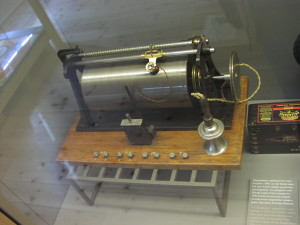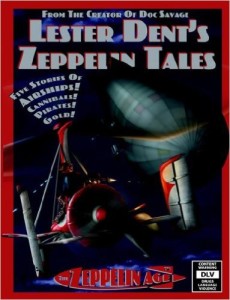Then I saw in my dream, that when they were got out of the wilderness, they presently saw a town before them, and the name of that town is Vanity; and at the town there is a fair kept, called Vanity Fair. It is kept all the year long. It beareth the name of Vanity Fair … because all that is there sold, or that cometh thither, is vanity… One chanced … to say unto them, ‘What will ye buy?’
John Bunyan’s The Pilgrim’s Progress was published in 1678. His description of Vanity Fair predates the Industrial Revolution by eight decades and the Machine Age by two centuries. And yet nothing characterizes the Machine Age and the Modern Era so much as the question, “What will ye buy?”
Mass marketing and the accompanying Consumerism began in The Machine Age. And as it began, so did the hue and cry arise for us to return to a simpler life and eschew the call to “Buy! Buy! Buy!” Writers such as John Burroughs, David Greyson, Edward Bok, Ralph Borsodi, and Theodore Roosevelt wrote books and articles and gave speeches extolling the virtues of a life without “stuff”. And all the while the Ad Men appealed to our sense of need.
I know for myself there is life before iPad and life with iPad. I confess, I prefer life with iPad. Although I could live without the iPad, it would be much more difficult to dispense with the world wide web altogether. I’ve become used to having volumes of information at my fingertips that would have been difficult for even my local research librarian to glean a mere 40 years ago.
The Stoic philosopher Seneca, very much a voice for our age, counseled his friend that wealth was not in and of itself bad. What was bad was thinking we can’t live without it or that we should have it.
With stuff comes anxiety and the modern age is filled with anxiety. Thoreau’s image of the man pulling a massive barn-sized wagon down the road with all of his worldly possessions piled high in it comes to mind. There is something a whole lot simpler about a backpack.
How then did Mass Marketing and Consumerism arise? They arose out of the scale of production and the means to produce tens of thousands of an item, whereas previously only a hundred or two had been produced. They arose out of the dreams of our Victorian ancestors of what constituted progress and plenty.
Prior to the Industrial Revolution, goods were generally produced at home or in small shops. What today we call cottage industries. Local artisans and craftsmen produced goods to order in addition to what they produced for themselves. The extra money helped to supplement what was produced on the farm.
For example, in the American Revolution muskets and rifles were produced by hand. The British government contracted with gunsmiths to produce a certain number of weapons in a given period of time. An agent then went to the gunsmith’s place of business, collected the weapons, and paid the smith. The same was done for uniforms before the big textile mills were built.
The process was slow and costly. Production of goods was often secondary to the main livelihood of the producer, which was usually farming. With the advent of steam power and the invention of machines to manufacture goods, the scale of production went up. Instead of maybe ten or twenty pairs of socks a cottage industry could produce by hand, the mills could produce ten or twenty thousand in the same period of time or less.
This, however, caused a problem for the manufacturer. He simply had too many items on his hands. The cost to him to produce a thousand was often greater per item than to produce ten thousand. The economics of scale gives us a lower cost per item the more we produce because it is cheaper to buy in bulk than singly. So what was a manufacturer to do with the extra goods? Enter the Ad Man and the Salesman and the call, “What will ye buy?”
An interesting article is “The Commercial Christmas”, which gives a quick look at how the Victorians commercialized the holiday. And by 1890 editorials were appearing in The Ladies Home Journal complaining of Christmas being too commercial.
Today we have, through the world wide web, everything at our fingertips and ad agencies convince us we just can’t live without _________ (you fill in the blank). The amount of consumer debt is frightening. In the US, as of 31 March 2015, household debt was $11.85 trillion. Of that credit card debt was $684 billion. And as of the end of 2013 28% of Americans had more credit card debt than savings and only 51% had more emergency savings than credit card debt. And this doesn’t include other debt, such as school loans, car loans, and mortgages.
Consumerism is alive and well. Every government in the Western World worries when consumers stop spending and every developing country’s government tries to figure out how to get its people to buy. The modern world is built on consumerism.
So why don’t we see more of this in our retro-future novels? Clearly the Steampunk and Dieselpunk real life worlds saw the beginning of mass marketing and consumerism and were in large part formed by them.
Is it a case, perhaps as with television, they are so much with us we see no fictional value in them?
I think of the short-lived, late ‘80s sci-fi TV show Max Headroom. For those of you who are unfamiliar with the show, it was a satirical and cyberpunk look at ourselves “20 minutes into the future”. The first episode, entitled “Blipverts”, explored mass marketing. [Spoiler alert here.] People were mysteriously exploding. It was discovered that Network 23 was using high-intensity commercials which had the ability to overload people’s nervous systems, causing them to explode.
Of interest is that the atmosphere of Max Headroom was about as depressingly noir as one can get. I think it was cyberpunk at its finest.
Surely there is something in this the steampunk or dieselpunk writer can use. After all both steampunk and dieselpunk are children of cyberpunk. I see both subgenres ignoring major expanses of territory which need to be explored. Where is the inventiveness of Jules Verne and H G Wells? Or Sir Arthur Conan Doyle and Fritz Lang (the movie Metropolis from 1927).
Both subgenres are science fiction and from my observation (of my own work too), both have degenerated into using highly selective tropes to produce works which are simply mysteries or romances or adventure yarns set in an alternative historical universe. There is nothing wrong with this. I just think there is so much more. Something like “Blipverts”.
Share This!



